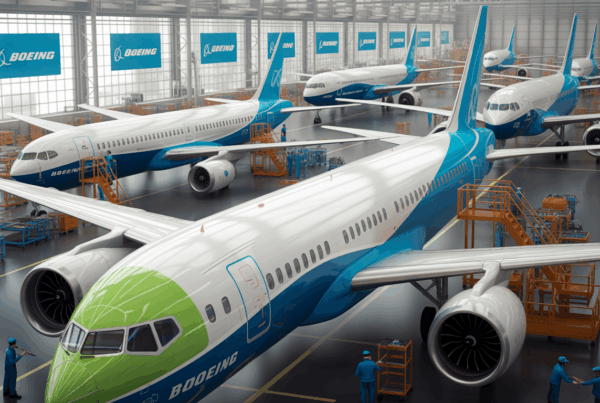Iran recently made an exceptional acquisition to modernize its air fleet. Five Boeing 777 have been achieved through strategic manoeuvres and devious methodsThis bold move reflects the country's determination to improve its competitiveness in the aerospace sector, despite international constraints. This bold move reflects the country's determination to improve its competitiveness in the aeronautical sector, despite international constraints. Experts are closely watching the development of this operation, which illustrates a new dynamic in the industry and bears witness to the rapid transformation of the Iranian aviation fleet. The geopolitical stakes are becoming more complex, while the operation is arousing debate and regional covetousness.
Recently, it was revealed that theIran had taken bold steps to strengthen its aircraft fleet by purchasing five copies of Boeing 777. This development is part of an already complex context, combining geopolitical issues and unconventional supply strategies. The details of these transactions suggest the use of devious methods to circumvent international restrictions.
In a climate of global tension, the Iranian authorities appear to be relying on a series of financial and technical arrangements to finalize this strategic purchase. The operation, which involves complex financial engineering, consists in concealing the origin of the funds, while relying on intermediaries to guarantee the confidentiality of the transaction.
At the same time, some observers note that the strategy deployed could serve as a model for other countries subject to international sanctions. The mechanisms mobilized make it possible to avoid the usual controls and pave the way for unconventional collaborations. Analysis of these practices echoes other international initiatives, such as the one reported in Lyon-Saint Exupérywhere innovation and creativity seem to be redefining industry standards.
At the heart of this affair, the question of the supply chain poses a number of challenges. The use of international intermediaries not only makes it possible to disguise the true origins of the purchase, but also guarantees a certain immunity from regulation. These techniques, known as devious methodsThese involve complex arrangements that are often the subject of discreet investigations by sector-specific regulatory agencies.
Comparisons with other partnerships in the aeronautics and air transport sectors are also emerging. For example, recent developments reported in a new partnership illustrate the ability of companies to navigate between tradition and innovation in order to expand their markets.
In addition, the transaction raises questions about the security of strategic equipment supplies. At a time when fleet modernization plays a key role in airline competitiveness, the use of transaction concealment techniques exposes the sector to legal and financial risks. These practices call for vigilance, and raise the question of their impact on the stability of the global aeronautics industry.
Moreover, the incident comes against a backdrop of growing rivalry in the international aviation market, where recent agreements testify to the dynamic renewal of alliances. Similar movements have been noted in code-sharing agreement between certain companies, consolidating their market position.
The implications of this operation are not limited to the material acquisition. They testify to a broader desire to redefine the contours of international commercial relations in the aeronautical sector. The strategy adopted byIran could also influence the supply policies and regulations of other nations.
Finally, this case is a reminder of the importance of information flows and transparency in international transactions. The way in which these alternative methods are implemented raises questions about the changing rules of the game in trade, as demonstrated by the news of Emirates and its summer initiatives that combine culinary innovation and marketing strategy.
At the same time, the economic and diplomatic impact of such operations remains to be seen, particularly in a context where tourism and mobility are becoming increasingly important. In this respect, studies on the tourism in France and income growth in other regions offer an interesting panorama of the flows of influence between the economy and aeronautics.
Strategic analysis of aeronautical acquisition
| Actor | L'Iran strengthens its aircraft fleet by opting for an unconventional approach. |
| Aircraft model | Acquisition of five Boeing 777 to modernize the air arsenal. |
| Acquisition method | Use of methods diverted to bypass conventional restrictions. |
| Supply procedure | Opaque operations designed to avoid the transparency of international markets. |
| Strategic impact | Immediate reinforcement of defense and intervention capabilities. |
| Political consequences | Potential to trigger tensions and reconfigure alliances. |
| Legal risks | Operations that may violate international standards and incur sanctions. |
| Regional issues | Intensifying competition for influence in the Middle East. |




